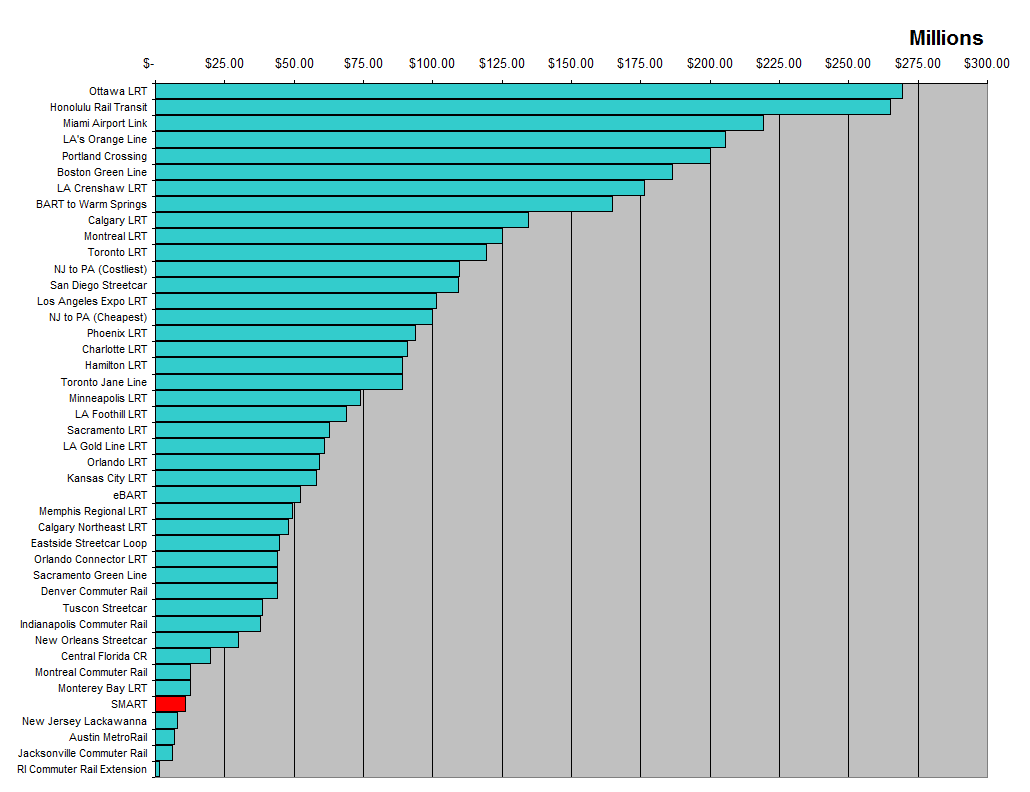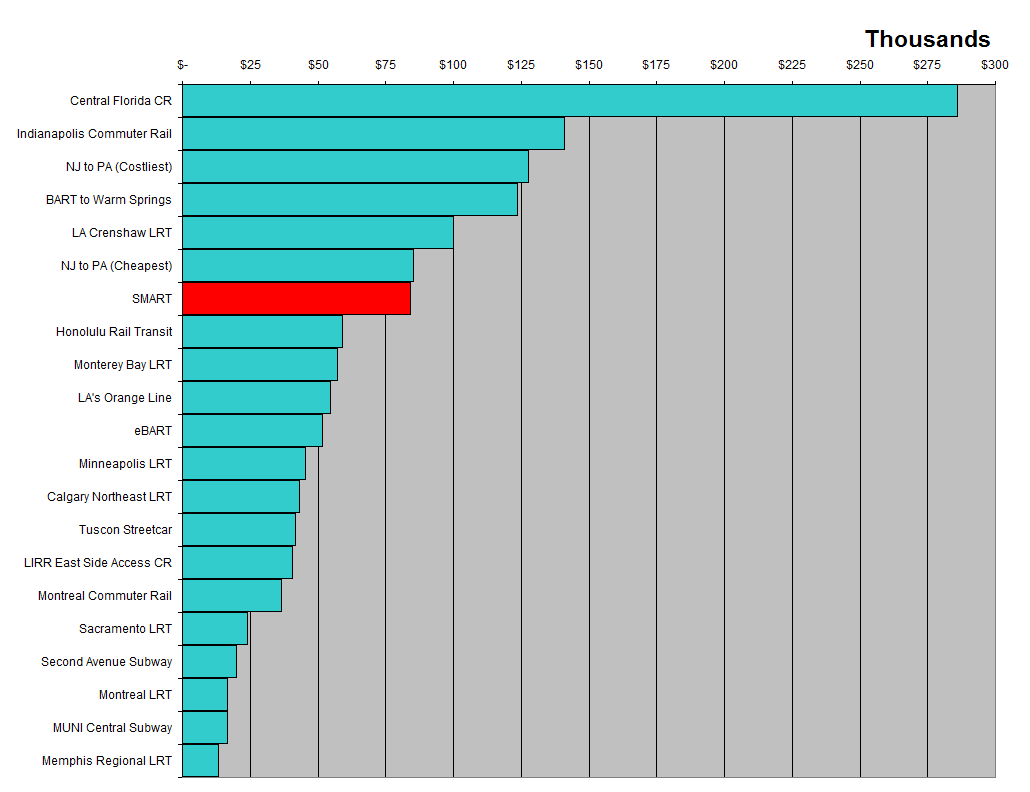There is no doubt that SMART is a major investment. At $404 million, the 37 mile system is the largest single public undertaking the North Bay has seen in quite some time. (Not to say it does not have competitors: CalTrans is widening and repaving Highway 101 up and down Marin at a total cost of $120 million, but that’s another story.) Because of that unique position in recent history, the project has no local context, allowing opponent claims that SMART is an expensive boondoggle to go largely unchallenged. To evaluate those claims, then, we need to place SMART's costs into the wider scheme of transit projects around the country. The easiest way to do that is to break each project down to two metrics: cost per mile (how cheap it is), and cost per rider (how cost-effective it is). Let’s look at both in turn.* SMART, assuming a final cost of $404 million (PDF) for the initial operating segment from San Rafael to Santa Rosa, will cost approximately $10.9 million per mile. These costs go to extensive upgrades and repairs to the old rail corridor, stations, trains, a parallel bike and pedestrian trail, and the attendant staff time and reports to go along with all that. This is relatively cheap for North American transit construction.
Out of the 49 projects The Transport Politic has lengths and cost for, SMART is only the 45th most expensive. The cheaper projects all run along currently active tracks or utilize existing trains, so only minimal track improvements are necessary. From a cost-per-mile perspective, SMART is one of the cheapest in the country.
From a cost-per-passenger viewpoint, however, things look different. SMART’s initial segment is expected to draw 4,800 riders per day (PDF), a respectable total but certainly not ideal. Using that number, we get a much different picture.
SMART’s initial operating segment will cost $84,167 per passenger, the seventh most expensive rail project in The Transport Politic’s database. This is not to say that its impact will be inconsequential – 4,800 riders would be about 9% the size of the projected Sonoma-Marin commuter base – but just that the cost per rider is on the high end of normal. To me, the high ratio of riders to commuters means that there just isn’t a lot of inter-county traffic to capture in the first place. Any growth, then, will most likely happen with intra-county travel.
Sonoma’s cities are trying to boost densities around stations that are currently planned, so ridership intensity should go up. Dick Spotswood could be (although probably isn't) correct and the projections might only be half the real ridership. And, if SMART wanted an intermediate expansion before completing the full line, expanding north to Jennings Road and south to Larkspur Landing – if my back-of-the-envelope calculations are correct – would add about 1,000 riders for $34 million. At $34,000 per rider, that would be a huge boost to the corridor’s effectiveness.
SMART is not the most cost-effective transit system in the country, but it is one of the cheapest. Its initial operating segment will capture a good chunk of Sonoma-Marin traffic, and the urban improvements it is sparking will add value far beyond SMART’s farebox. We now return to our first question: is SMART a boondoggle? The answer, it seems, is no.
---------------
*Note that for this exercise, SMART's stats are pulled from the most recent ridership report from February and the most recent cost update from August. All other system stats are from The Transport Politic's database of rail transit systems that are planned or under construction.

